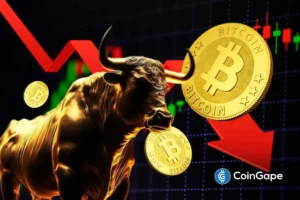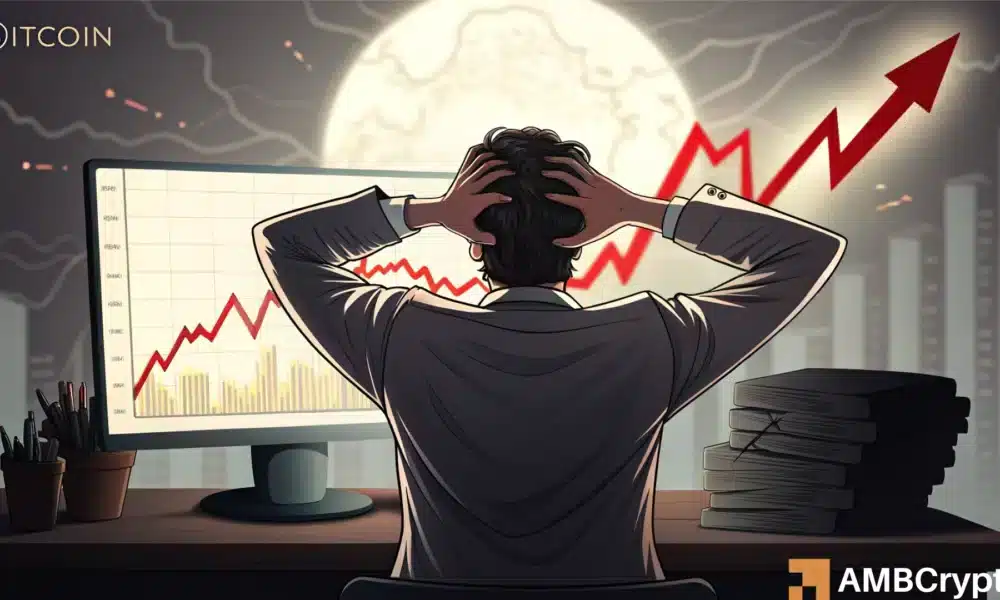Bitcoin’s Resilience: Navigating Macro Volatility and Whale Dynamics
Bitcoin’s recent pullback has drawn attention, revealing insights into market dynamics that go beyond mere macroeconomic influences. While some skeptics argue that the cryptocurrency’s swift drop to $98k on June 22 might signify a return of macro volatility, a deeper analysis suggests that profit-taking by whales—and not widespread panic—primarily drove this fluctuation. As we head towards Q3, the question remains: is Bitcoin’s current stability indicative of long-term strength, or is it simply the calm before the storm of renewed macro volatility?
The Shifting Market Structure of Bitcoin
Bitcoin’s ability to withstand geopolitical turmoil without losing its $100k benchmark signifies a meaningful shift in market structure. Historically, geopolitical shocks would likely trigger severe price corrections; today, however, Bitcoin seems equipped to absorb such pressures without collapsing. This resilience prompts questions: Are factors like constrained supply, consistent support levels, and optimistic on-chain trends bolstering Bitcoin, or is the market more forward-looking in anticipating geopolitical outcomes? The current market scenario suggests that while Bitcoin appears stable, the potential for volatility persists, waiting for its next catalyst.
The Role of Whale Activity in Bitcoin’s Price Dynamics
Contrary to what some may believe, the recent corrections in Bitcoin’s price appear largely influenced by whale behavior rather than macroeconomic chaos. The pullback experienced earlier this month—an 11% decrease—seems relatively mild when compared to historical drawdowns, such as the dramatic 22% drop during the “Liberation Day” crisis. An analysis of the data highlights that the market’s response was rooted more in profit realignment rather than panic. Notably, on June 16, whales holding over 1,000 BTC orchestrated a significant sell-off, depositing 20,000 BTC, which catalyzed a sharp price correction. Such moves indicate that despite the volatile trading environment, Bitcoin remains buoyant, awaiting the larger macroeconomic cues.
Anticipating Tariff Turbulence Ahead
Looking ahead, the market is preparing for potential turbulence as President Trump’s 90-day tariff pause is set to expire on July 9. Unless new trade agreements are forged, the return of reciprocal tariffs could significantly impact global trade flows. Trade pressures would see the European Union facing import tariffs of up to 50%, whilst China maintains a 30% tariff, alongside a global baseline of 10%. The implications for Bitcoin and broader equity markets are immense, as equities have surged significantly since April, reflecting optimism while Bitcoin recorded a substantial 37% increase. However, as the tariff deadline approaches, the potential for renewed trade friction could spike inflation, presenting a challenge for the Federal Reserve’s potential rate cuts.
The Stakes Continue to Rise for Bitcoin
As trade frictions loom on the horizon, the stakes for Bitcoin’s stability escalate. The previous environment of whale support amid market turmoil could shift if tariffs reignite inflationary pressures. This may compel whales—who have maintained composure amid current geopolitical uncertainties—to readjust their strategies due to increased market volatility. With macroeconomic factors at play, Bitcoin’s $100k price point may face its most significant test yet, warranting close observation from investors and market analysts alike.
Strengthening the Case for Bitcoin’s Continued Growth
Amidst the looming geopolitical and economic uncertainties, Bitcoin’s inherent characteristics—namely, its limited supply, decentralized nature, and strong community backing—continue to support its growth trajectory. As the cryptocurrency matures, its ability to withstand macro shocks will only strengthen its appeal as a hedge against global economic uncertainties. Enthusiasts and investors are becoming increasingly aware of Bitcoin’s value proposition and its role in diversifying portfolios in a world rife with turmoil. This awareness could lead to increased demand, propping up Bitcoin’s price even amid external pressures.
Conclusion: A Critical Juncture for Bitcoin’s Future
As we approach the end of the tariff pause and witness unresolved geopolitical tensions, Bitcoin stands at a critical juncture. The upcoming months will likely determine whether it breaks through resistance levels or navigates new market realities shaped by macroeconomic factors. While its recent stability is commendable, the potential for volatility remains ever-present. Investors and market watchers will be keeping a keen eye on regulatory developments, whale activities, and broader economic indicators. Should Bitcoin maintain its footing amidst these challenges, it could solidify its position as a formidable asset in the financial landscape, echoing the resilience it has shown in the face of previous adversities.

















